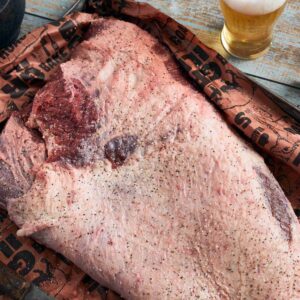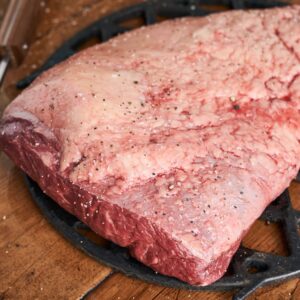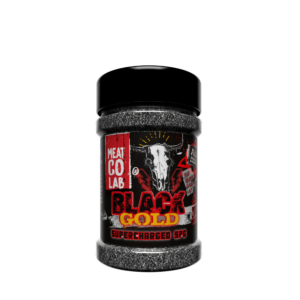
Slow Cooked Pork with Apple and Cider
- 165 Minutes
- Easy
- Pork
The great thing about this slow cooked pork with apple and cider recipe is that it is nearly fully self-saucing, so you don’t need to mess around making a gravy from scratch. This is thanks to the apples roasting alongside the pork creating a deliciously sweet cider gravy, the perfect flavour combination for the saltiness of the pork.
Cooking Method
- Pre-heat the oven to 180C/fan 160C/gas 4. Rub salt over the pork and place it in a large roasting tin. Pour in the stock and cider, spoon in the sugar around the pork (ensuring it doesn’t touch the skin), then add the halved garlic bulb and half the sage.
- Roast for 1 hour, meanwhile score a line round the middle of each apple with a small knife. Add the apples to the tin after the first hour of roasting.
- Roast for another hour or until a digital probe thermometer pushed into the middle of the meat reads 65C. Take the apples and garlic out of the tin and put on a plate, cover, and keep warm.
- Remove the pork and pour the juices into a pan. Put the pork back into the roasting tin, increase the oven to 240C/fan 220C/gas 9 and roast for 15-20 mins until the skin is crackled and crisp. Take out of the oven and rest for 20 mins.
- Put the pan with the roasting juices over a medium heat, add the rest of the sage and bubble to reduce to a rich, slightly thick sauce. Stop reducing when you’re happy with the balance of flavours.
- Add a splash of extra cider to give the sauce a lift, serve the pork with the apples and sauce and your choice of Christmas sides.
The Ingredients
- 2kg pork shoulder with skin scored for crackling
- 300ml of fresh chicken stock
- 200ml of dry cider
- 1 tbsp of demerara sugar
- 1 garlic bulb, halved across the middle
- Small bunch of fresh sage leaves
- 8 eating apples
What to serve with slow cooked pork with apple and cider
This slow cooked joint of pork with apples recipe makes an amazing Christmas time meal for the whole family. With that in mind, we think these classic Christmas sides will work nicely with this recipe:
- Roast potatoes flavoured with garlic and rosemary
- Cauliflower cheese
- Steamed greens
- Red cabbage
- Brussels sprouts
- Herb-buttered baby carrots
Frequently Asked Questions
If you’re using pork loin, it will likely take around 4 to 5 hours on a low heat to become perfectly tender and juicy. Pork shoulder should be cooked for around 10 hours on a low heat for 1.5-2.5kg.
Achieving a crispy crackling on your pork requires the use of regular table salt (to penetrate the skin) and salt flakes (for a crispy crust). You can use a bit of oil to help the salt stick to the meat better, but if you rub the salt in well you won’t need any extra fat.



